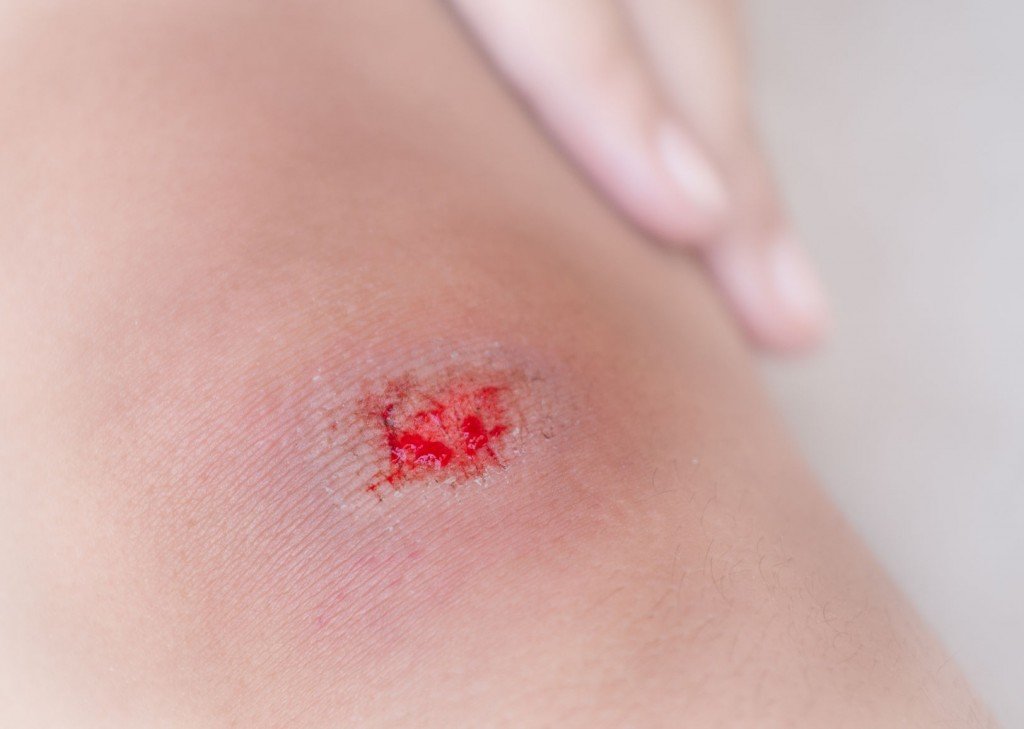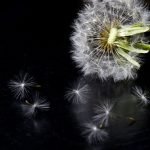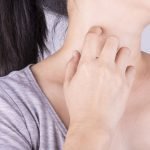Sussanna Czeranko, ND, BBE
By these ulcers nature indicates her desire to excrete impure matter, and she only requires a little help.
-Friedrich Bilz, 1898, p. 841
The greatest importance should be paid to keeping the wound perfectly clean.
-Benedict Lust, 1901, p. 300
Ulcers covered with aloe-powder will soon heal. The powder absorbs the morbid matter. Wounds quickly close if aloe-powder is used.
-Benedict Lust, 1900a, p. 11
In 1902, the first naturopathic journal was published! I want to repeat this statement out loud, and loudly. Before 1902, we did not exist as a collective group of healing professionals, much less document our travails. Today, our existence can be traced not only back to this pioneering attempt to give the profession a collective voice, but in turn to one man who dared to navigate the complicated terrain of biomedicine 111 years ago. In 1902, Benedict Lust was 30 years old, and he already had a long list of achievements, despite his youth. In 1896, when he was 24, he had already begun publishing in German (Amerikanische Kneipp-Blätter), had established a school for healing in New York City, was practicing nature cure in a clinical setting, and had opened one of the nation’s first health food stores. When he was 30, he founded the first Naturopathic Society of America in New York City and had already faced numerous judges for the unthinkable crime of administering baths in a city where, at the same time, an MD named Simon Baruch had been lobbying for public hygiene facilities for almost 2 decades, with impunity. Lust, though, did not falter. He was an entrepreneurial new immigrant to America who had to learn English to publish that first journal in English in 1902, and who did so for the next 5 decades.
We are very familiar with Benedict Lust’s story and know that his serendipitous introduction to naturopathy arose from treatment for tuberculosis by an amazing mentor, Fr Sebastian Kneipp. At the turn of the 20th century, tuberculosis was a death sentence for most. The water cure treatments that Lust received from Kneipp, though, saved his life and launched his lifework. Lust returned to New York City with a commission from Kneipp to introduce Kneipp’s water cure therapies in America. For the next half century, Lust dedicated his heart and soul for the promulgation of naturopathy. As a master of multitasking, he was an educator, a physician, an editor, a shop owner, a director of more than one retreat center, and a leader of the Naturopathic Society of America in New York City. The Naturopath and Herald of Health would become the voice for the naturopathic profession as they collectively explored and nurtured the full potential of this emerging new medicine. This journal was where many future NDs would make their contribution to the promotion of naturopathy. Today, The Naturopath and Herald of Health has become a dusty reminder of our origins and has been long replaced by many other naturopathic journals.
Prior to 1902, the word naturopathy was used by practitioners Drs John Scheel and his wife, Sophia, who ran a sanitarium called Badekur in Brooklyn, N.Y., specializing in pediatrics and homeopathy. The word naturopathy was lent to Benedict Lust for his journal and for the moniker of a new natural healing paradigm (Lust, 1902a, p. 33). From the very beginning, though, naturopathy has been considered by allopathic biomedicine as a threat to their hegemony and dangerous theoretically and clinically. Lust led the charge to resist, and to this day we continue struggling to secure a place in the landscape of medicine. Lust was indefatigable in that quest. There are many all over America and Canada to this day who continue that effort. Their success has been built on the work of those who came before. Those who came before assembled a body of knowledge, codified significantly by Lust in his journals. Those successes, though, have been bruised often over the years by a dismissive allopathic profession who do not think that the old nature cure ways have value, much less a way to monetize the treatments exorbitantly.
To build on this concern about the confidence of our new young physicians in the old ways, I spoke recently to a young physician practicing in Minneapolis, Minn., and my heart was saddened that he and others of our beginning colleagues are still finding the Road to Wellville confusing, often treacherous, and riddled with regulatory and economic potholes that threaten to slow and even block their path. My conversation with this young physician reminded me of those days when my confidence in traditional nature cure, although clear in my mind, was not accompanied by long experience and personal results. I worried that I did not know enough to be effective yet, and I felt this most particularly when the very first patient to cross the doorstep of my first clinic presented with breast cancer. Quietly, I mumbled to myself, “Oh my, what do I do?” The voice inside answered, “Do what you know.”
From that first patient came many referrals, and the story leads me to this issue of NDNR and raises the question of what did the young Benedict Lust do for those difficult patients who showed up on his doorstep, for example, with issues that ranged from the extremes of chronic disease to simple skin conditions, and all of this when he had just started his naturopathic clinic within the framework of a new profession in a new century? Knowing more about how our pioneering forebears dealt with the difficulties in front of them proved to be inspiring for my young friend from Minnesota. In this issue, then, to build on this point that we have traditions and roots and a magnificent history to anchor us, let us look at some early examples of, say, first aid measures that were published in the first few journals by Lust and his colleagues as illustrations of their confidence and tenacity.
In 1900, Lust began an English version, The Kneipp Water Cure Monthly, of his earlier German journal, Amerikanische Kneipp-Blätter. This English Kneipp journal persisted for 2 years and was last published in December 1901. This journal was then replaced in 1902 by The Naturopath and Herald of Health. In these early journals, the use of herbs in the treatment of skin ailments was combined with hydrotherapies. In the early days of naturopathy, Kneipp’s water treatments and his herbal formulas were the primary focus of Lust’s articles. Lust, having spent several months with Kneipp, had become quite familiar with Kneipp treatments. While we have become in our day accustomed to ingesting herbal tinctures, the early NDs used these plants as powders, tinctures, and decoctions applied directly to the injuries found on the skin. These approaches were discussed abundantly, among others, in the issues of the early journal publications as a way of stimulating a dialogue among the rapidly growing body of NDs. The materials were pragmatic, comprehensive, and derived from active clinical practice. From simple processes such as staunching bleeding to more complex dialogue about chronicity, Lust’s journals were a meeting place for a profession finding its legs.
Staunching Bleeding
In a 1900 article, at one end of the spectrum of potential presentations by patients in the offices of NDs, Lust pondered an everyday occurrence, the accidental wound on the job that can occur for the working person: “The bleeding commences and in most such cases the wounded and the people about him lose their heads instead of thinking how to staunch the bleeding immediately” (1900b, p. 27). Lust presented a very simple remedy for stopping bleeding quickly and efficiently. His instructions were simple: “Take a little cotton, dip it into hot water and put it on the wound, and bleeding will stop in an instant” (Lust, 1900b, p. 27). Lust cautions that if cool water is used, the effect will be disappointingly worthless.
Chapped Hands
In these first years, Lust considered Kneipp as a foundation for naturopathic medicine and subsequently published many articles replete with excellent advice and ideas based on Kneipp’s work and on the work of many of Kneipp’s students and followers. In the April 1902 issue of The Naturopath and Herald of Health, for example, Lust borrowed material from another Kneippian, Friedrich Eduard Bilz (1842-1922), a German ND who wrote The Natural Method of Healing in 1888, a two-volume collection (2074 pages) that was translated into English in 1898.
In any case, “chapped hands” and how to treat them was a topic in April 1902:
These small cracks, appearing on hands and feet, especially after a great change in the temperature, are cured most speedily if the affected parts are first wrapped for from half an hour to an hour in a warm compress of soaked hayseed and then dipped immediately into cold water for three minutes. (Bilz, 1902, p. 185)
The cold-water dipping was repeated a second time during the day of the hayseed treatment.
Suppurating Wounds
To clean wounds, Kneipp used decoctions made from “alum-water (1 ounce of alum to 66 ounces of water) and agave-water (1 ounce of agave [American aloe or Agave americana] to 50 ounces of water) or decoctions of sage [Salvia officinalis] or shave grass [Equisetum arvense]” (Lust, 1902b, p. 348). A decoction of Equisetum was “one of the best of Nature’s cleansers. A daily ablution, mornings and evenings with a shave grass decoction is quite sufficient to keep any wound clean” (Lust, 1901, p. 300). Another suggestion for wound cleaning was “honey water to which have been added a few drops of arnica or calendula tincture” (Lust, 1905, p. 189). Adding arnica tincture or decoction in honey or with Equisetum “either in equal parts or two parts of water to one part of tincture” (Lust, 1901, p. 300) helped speed up healing.
Another common herb, Plantago lanceolata, was an excellent dressing for wounds that healed wounds rapidly without scarring. The sap of the leaves was placed on the wound, and the leaves themselves were used as the bandage (Lust, 1900c, p. 40). Plantain was regarded as a blood purifier when taken internally. An herb renowned for relieving inflammation was coltsfoot; these Tussilago farfara leaves applied to ulcers “absorb[s] the heat and draw[s] out the vicious matter” (Bilz, 1898, p. 842). Lust added, “In cases of acute sores accompanied by fever, leaves of coltsfoot deaden the pain considerably” (1902b, p. 348). For open wounds, Tussilago will “remove the heat, the redness and draw out injurious matter” (Lust, 1900a, p. 11).
Bilz considered Equisetum as one of the most important herbs, stating that “for all ulcers, even of a cancerous nature, one may resort to infusion of pewter grass [Equisetum] combination with washings, compresses and packs” (Bilz, 1898, p. 841). Lust also sang the praises for Equisetum:
It washes away, dissolves, burns out, as it were, all that is injurious. The herb is used either as decoction for ablutions, bandages, vapors, or compresses or it is wrapped up in wet cloth and laid on the suffering part. (1900d, p. 163)
For old suppurating wounds and ulcers, “the decoctions of sage and shave grass are especially beneficial” (Lust, 1902b, p. 348). To make the decoctions, “a large handful of either of these herbs is boiled for some time in a quart of water, which is then passed through a sieve” (Lust, 1902b, p. 348). The decoction would be cooled before applying to the wound.
To help the formation of new skin, Lust recommended the “sprinkling of agave powder over the sore and thereafter careful wrapping up to prevent contact of the air” (1902b, p. 348). He wrote: “Tea made of aloe-powder may be used with good results in cases . . . of old wounds and putrified flesh. For this purpose put on the wound a piece of linen dipped into the aloe-water” (Lust, 1900a, p. 11). Generation of healthy new skin in the place of old scarred tissue was possible with the use of aloe powder.
If the suppuration is foul smelling, Lust explained that the use of “lime-charcoal powder over the wound [will] absorb and dry the bad matter” (1902b, p. 348). For the formation of new skin, Bilz advised that “charcoal dust—that made of limewood is the best—powdered on the wounds once or twice a day, acts as an absorbent and promotes the formation of fresh skin” (1898, p. 842). The powder of lime-charcoal was actually made from the wood of Tilia grandifolia or Tilia parvifolia. Today, we have activated charcoal as one of our most valuable first aid absorbents of toxins both internally and externally. A charcoal poultice is “a most excellent poultice for gangrene, old ulcers and sores” (Kloss, 1939, p. 379).
Besides using herbal powders, decoctions, and tinctures, the literature shows that early NDs also relied on the power of water therapies. Bilz outlined the compress procedure for an ulcer, for example:
A long and broad compress of thin linen, in four layers, immersed in water of 81°F [27°C], put on the ulcer; over that a second compress of course linen, eight thicknesses, and dipped in water of 67°F [19°C]. The first, lying immediately on the ulcer, served as a permanent compress, and was not removed; while the second thick one was renewed as the under one became dry. (1898, p. 842)
Honey
Beck and Smedley, 4 decades into the new century, continuing the accumulation of a remarkable compendium of advice, examples, protocols, and data from the nature cure tradition, wrote about the medical value of honey in treating skin conditions. They explained, “It is singular that, though honey was used for thousands of years for treatment of wounds and skin troubles, our modern medical literature ignores the subject” (Beck & Smedley, 1944, p. 155). In particular, “the rural populations of the European continent, especially that of the Slavic countries, used honey for all kinds of wounds and inflammations” (Beck & Smedley, 1944, p. 154). Agave or American aloe mixed with honey was used as a healing lotion and a powerful disinfectant. Preparation of the lotion involved “[a]n American aloe leaf, boiled in a pint of water with a teaspoonful of honey” (Bilz, 1898, p. 842). Honey was considered “a simple, efficacious and harmless remedy . . . used as an ointment; half honey, half flour, well mixed with a little water till a fairly firm salve is obtained” (Bilz, 1898, p. 842). Beck and Smedley reported the superiority of honey over other ointments: “Dr. Zaiss, of Heidelberg, . . . has treated several thousand cases of severe infections with honey and could not report a single failure” (1944, p. 155). Lust preferred honey, as well, for skin ulcers could be “disinfected by honey, which is much to be preferred to carbolic acid” (1905, p. 189). This advice was counter to the use of carbolic acid at the time, a popular disinfectant in the 19th and early 20th centuries among MDs. The NDs did not embrace its use like their medical counterparts for the treatment skin ulcers. Bilz commented, “It is entirely wrong and reprehensible, in such cases, to have recourse to the use of carbolic acid by the gallon” (1898, p. 841). Another use of honey was to “help to bring an ulcer to a head” (Lust, 1905, p. 189), in which honey was mixed with rye flour and applied.
Prevent Blood Poisoning
Fenugreek (Trigonella foenum-graecum) had multiple uses and was found in compresses, gargles, teas, and plasters. Compresses made with fenugreek decoction were considered to be very effective in the treatment of abscesses, ulcers, and boils. To prevent granulation of wounds and blood poisoning, fenugreek paste was a remedy that Fr Kneipp employed with great success: “Compresses of fenugreek, boiled like linseed, draw out inflammation from the margins of wounds, and prevent the formation of proud flesh, or blood poisoning” (Lust, 1902c, p. 432). Kneipp wrote: “The powder mixed with water is boiled to a paste and placed on the suffering part in linen rags” (1896, p. 157). This paste was also used by Kneipp to dissolve tumors. Its action was slow and painless, but lasting and thorough (Kneipp, 1896, p. 157).
The hayseed shirts accompanied the fenugreek poultice. Kneipp’s prescription for the week of treatment included “two hayseed shirts, two full lavations, and two half baths” (Lust, 1902c, p. 432). Skin ulcers and abscesses also called for compresses. Compresses helped revive and strengthen the vital force of the patient to rid the morbid matter from the body. The hayseed flower compress was applied at the first sign “of blood poisoning . . . or still better bathe the part of the body in question in a decoction of hay-flowers” (Lust, 1901, p. 300).
Conclusion
One can see, then, from this short jaunt through the rich literature of Lust’s journals the array and depth of approaches to care that the NDs in the first half of the last century shared with each other. We may be smug living in our hygienic sanitized world, rarely encountering ulcers or boils. However, our naturopathic ancestors knew from the literature they generated and shared that there were simple, natural tools available for treatments they felt confident to use, and which my young colleague from Minnesota can make use of too. He would be walking, as I have for many years, in the footsteps of physicians who really only had simple tools in their armamentarium. So, dear colleagues, especially those of you who are starting out as NDs, believe in what you do, and begin your day saying out loud three things that you are grateful for. Begin your day with gratitude, and the universe will respond with outrageous abundance. Begin and move through your day knowing that for over 100 years now many have traversed the same Road to Wellville.
 Sussanna Czeranko, ND, BBE is the curator of the rare book collection at NCNM in Portland, Oregon. She is currently compiling an eight-volume series on nature-cure topics for the profession. She is also an adjunct faculty member of the Transformative Voice Institute in Portland, the founder of the Breathing Academy, and a founding board member of the Buteyko Breathing Educators Association. She is a licensed naturopathic doctor in Ontario and in Oregon, and a graduate of CCNM. She has been in practice since 1994, incorporating nature-cure modalities and tools into her practice with great success.
Sussanna Czeranko, ND, BBE is the curator of the rare book collection at NCNM in Portland, Oregon. She is currently compiling an eight-volume series on nature-cure topics for the profession. She is also an adjunct faculty member of the Transformative Voice Institute in Portland, the founder of the Breathing Academy, and a founding board member of the Buteyko Breathing Educators Association. She is a licensed naturopathic doctor in Ontario and in Oregon, and a graduate of CCNM. She has been in practice since 1994, incorporating nature-cure modalities and tools into her practice with great success.
References
Beck, B. F., & Smedley, D. (1944). Honey and your health. New York, NY: Dodd, Mead & Company. (Original title Honey and Health published 1938)
Bilz, F. E. (1898). Bilz: The natural method of healing. F. E. Bilz Publishing.
Bilz, F. E. (1902). Diseases: How to treat them according to the Kneipp system. The Naturopath and Herald of Health, 3(4), 185-187.
Kloss, J. (1939). Back to Eden. Coldmont, TN: Longview Publishing House.
Kneipp, S. (1896). My water-cure. Kempten, Germany: Jos. Koesel.
Lust, B. (1900a). Herbs and their healing power. The Kneipp Water Cure Monthly, 1(1), 11-12.
Lust, B. (1900b). Staunching of bleeding in cases of wounding. The Kneipp Water Cure Monthly, 1(2), 27.
Lust, B. (1900c). Ribwort. The Kneipp Water Cure Monthly, 1(3), 40-41.
Lust, B. (1900d). Shave grass (common horse tail). The Kneipp Water Cure Monthly, 1(9), 163.
Lust, B. (1901). How to heal wounds quickly by natural means. The Kneipp Water Cure Monthly, 2(11), 300.
Lust, B. (1902a). Editorial drift. The Naturopath and Herald of Health, 3(1), 32-33.
Lust, B. (1902b). Kneipp’s popular healing remedies, and their application. The Naturopath and Herald of Health, 3(8), 348-349.
Lust, B. (1902c). Diseases: How to treat them according to the Kneipp system. The Naturopath and Herald of Health, 3(10), 432-435.
Lust, B. (1905). Ulcers. The Naturopath and Herald of Health, 6(7), 189.





